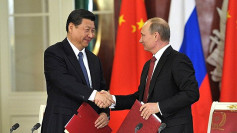Asia and China remain unable to feed itself and are 'too dependent' on others for food, argues the Asia Food Challenge Report: Harvesting the Future report released last week.
Asia as a whole needs to invest another $800 billion over the next 10 years to produce more food to meet its needs. This $800 billion investment opportunity in Asia's agri-food industry needs to be filled in the next decade.
About half of that investment could go to China, according to the first-of-its-kind in-depth report that delves into Asia's food and agricultural landscape. The Asia Food Challenge was officially released by PwC, Rabobank and Temasek in conjunction with the 2019 Asia-Pacific Agri-Food Innovation Week in Singapore.
"The biggest opportunity for the agri-food sector in Asia is probably in China," said Temasek's Anuj Maheshwari. He said this is because agricultural companies that use smart automation technologies already exist in China.
By 2030, Asia's population will have increased by 250 million, which is the equivalent of another Indonesia. The report said 65% of the world's middle-class population will be found in Asia a decade from now and will be willing to pay a premium for more nutritious, safe, sustainable and convenient food. That food isn't forthcoming, however, and Asia will continue to rely on other countries to meet its food needs.
"Asia is unable to feed itself, relying on imports flowing through long supply chains from the Americas, Europe, and Africa," contends the report.
Asia's spend on food is expected to increase by 7% per year over the next decade, but its food industry is still struggling to keep up. Growing populations and massive urbanization have led to massive food waste and poor food quality as supply chains are stretched and broken.
Climate change and environmental degradation continue to impact yields and farm output. Both will also add to Asia's problems by impeding food supplies and boosting prices. The report said extreme weather will reduce crop yields and change planting structures. The amount of arable land for each person in Asia is expected to decline by 5% by 2030.
"When you start to add them all up, whether that's climate change, increasing population, a more demanding consumer, all of those together is a pretty scary stark picture," said Richard Skinner, Head of Deals Strategy & Operations (DS&O) Asia Pacific at PWC. "If we don't solve this, we will be in a bad position in 10 years' time."
Skinner also noted Asia is too dependent on others both for its technology and food. He warned that if Asia doesn't solve this, "there will be problems on our doorstep."






